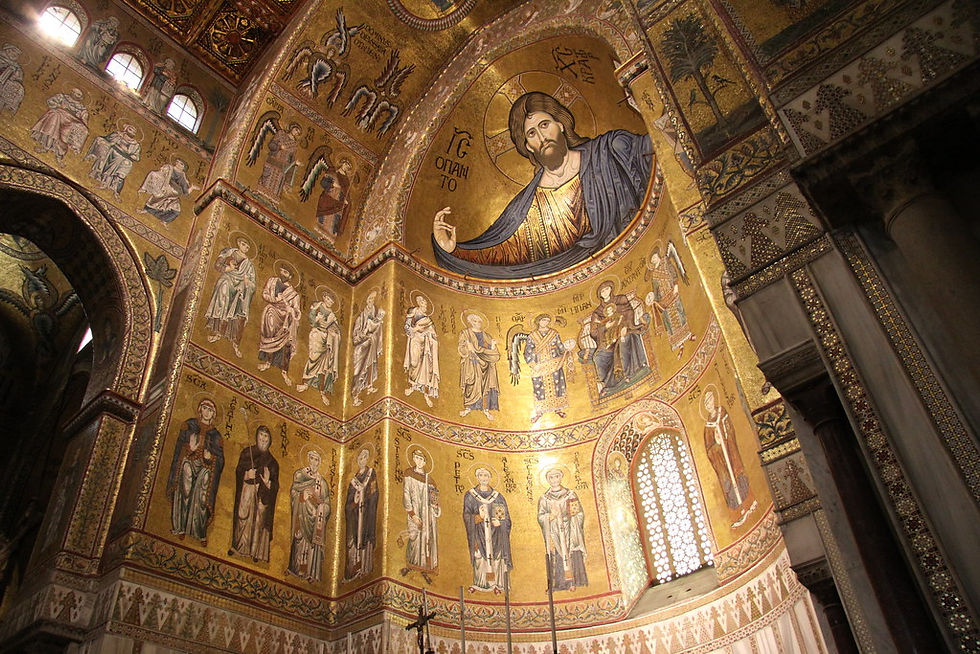Wonders of Italy: Monreale Cathedral
- IICCI_Communications

- Oct 7, 2021
- 2 min read
The Cathedral of Monreale near Palermo, Sicily, is one of the world’s greatest examples of Norman architecture and is especially famous for the dazzling Byzantine mosaics guarded inside. It is part of the Unesco World Heritage site known as “Arab-Norman Palermo and the Cathedral Churches of Cefalú and Monreale,” inscribed in 2015.
The Cathedral is part of a larger monumental complex that also includes a Benedictine convent and the Royal Palace; it was built under the reign of King of Sicily William II between 1172 and 1183.

The facade of the Cathedral is inserted between two massive bell towers. Inside, the central space is divided by two rows of nine columns, all in gray granite except for the first on the right, made in cipollino marble; symbolically, the columns supporting the arches indicate God who supports the church aided by man, represented by the column made with the poorest material.
The extraordinary mosaics that cover the internal walls of the church represent one of the largest cycles in the medieval world, covering an area of more than 6,000 square meters, created so that people could immerse themselves in the sacred space. There are 130 paintings with stories from the Old and New Testament and the Life of Christ, with the intent to display the divine plan for universal salvation, starting from the creation of the world and of man.
What strikes the eye most is the central apse with the Christ Pantocrator and the Virgin and Child among angels and saints. Also of particular interest are the two mosaics featuring William II: one is on the wall overlooking the royal throne, depicting William II crowned by Christ; facing it is the mosaic, positioned above the bishop's throne, that depicts William II offering the model of the church to the Virgin - an explicit glorification of the figure of the king.
Courtesy: Italy Magazine










Imagine walking under the colonial-era arches of Connaught Place, the city's pulse echoing around you, accompanied by an elegant CP Escorts who matches not just your aesthetic preferences but also your personality.
AV在线看 AV在线看;
自拍流出 自拍流出;
国产视频 国产视频;
日本无码 日本无码;
动漫肉番 动漫肉番;
吃瓜专区 吃瓜专区;
SM调教 SM调教;
ASMR ASMR;
国产探花 国产探花;
强奸乱伦 强奸乱伦;
Games can enhance spruted memory and recall abilities, as players often need to remember rules, strategies, and game elements.
google seo…
03topgame 03topgame;
gamesimes gamesimes;
Fortune Tiger…
Fortune Tiger…
Fortune Tiger…
EPS Machine…
EPS Machine…
seo seo;
betwin betwin;
777 777;
slots slots;
Fortune Tiger…
seo优化 SEO优化;
bet bet;
google seo…
03topgame 03topgame;
gamesimes gamesimes;
Fortune Tiger…
Fortune Tiger…
Fortune Tiger…
EPS Machine…
EPS Machine…
seo seo;
betwin betwin;
777 777;
slots slots;
Fortune Tiger…
seo优化 SEO优化;
bet bet;